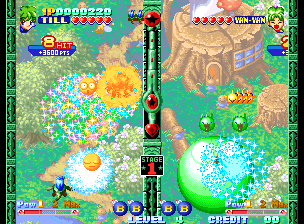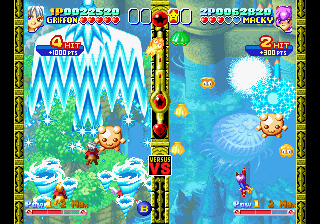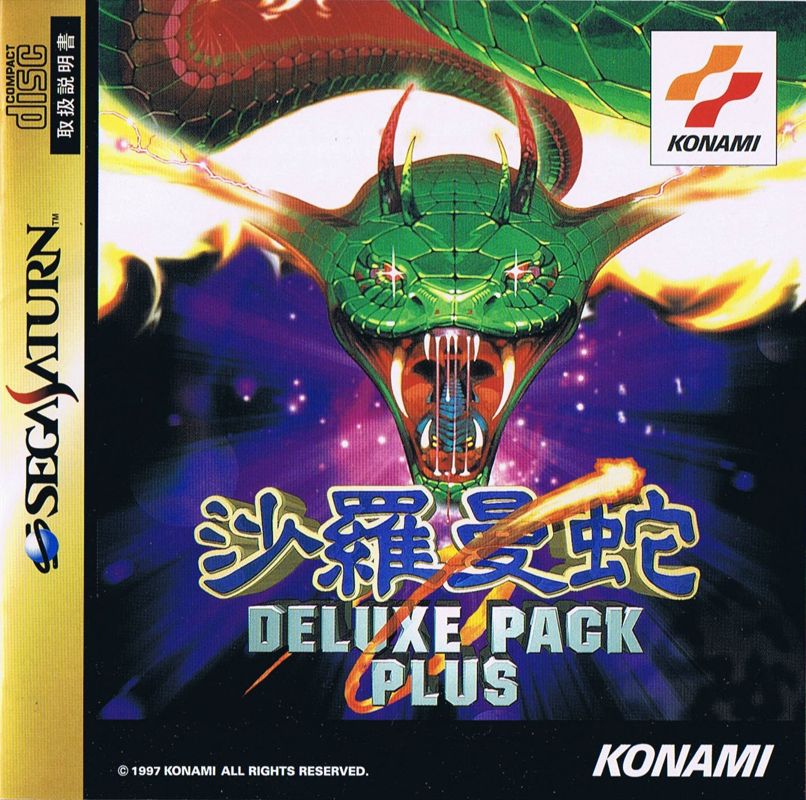Daniel Thomas MacInnes
GAF's Resident Saturn Omnibus




Digital Pinball: Necronomicon (1997, KAZe)
If you're a fan of pinball machines, Sega Saturn has you covered with no less than seven pinball games in its software library. Two of the best come from Japanese developer KAZe, who released the excellent Digital Pinball: Last Gladiators in 1995, which was followed two years later with a second installment titled Necronomicon that unfortunately never left Japan, most likely due to the Saturn's fading fortunes in the West. Today, the title has become a cult favorite among Saturn and pinball fans alike, and import prices have remained reasonable.
Digital Pinball: Necronomicon is a collection of several pinball machines with a common gothic heavy metal theme. All the boards are original designs but created to mimic real-life pinball as much as possible. You will find the usual assortment of flippers, bumpers and ramps, along with multiple pathways and targets. The designs are based on the 1990s pinball revival, in which designers took inspiration from videogames by incorporating multiple objectives and a final goal to "defeat" the machine. They even included a small video display to highlight important scoring events and add to the immersive experiences. Each of these elements are perfectly recreated by KAZe's software team.
Pinball physics has always been a major challenge for video and computer games, and most attempts have struggled to capture the nuances of weight and momentum, the pull of gravity, the feel of the pinball and how it interacts with its environment. KAZe succeeds superbly, and they may have mastered these elements better than, well, anyone. The balls in Digital Pinball have a real sense of weight and motion, and I hadn't realized until now just how floaty most video pinball games have been. It's just one of those things you learned to make your peace and accept, in hopes that programmers would one day figure it all out. Well, these coders have definitely cracked the mystery, and kudos to them for it.
The physics are so solid, in fact, that I'm almost immediately reminded just how terrible I am at real-life pinball. I usually lose my pinball within the first ten seconds and feel like an idiot. Thankfully, all of the Necronomicon tables incorporate a "frozen" feature that gives you back your ball if you lose too quickly. I think the game eventually just feels sorry for me and starts handing out multiballs and jackpots to help me feel better. Yeah, well, I don't need your pity. Okay, I kinda do.
One gameplay feature that I really enjoy are the board instructions, which are available when you pause the game and press the A button. These include a detailed map of the pinball board, the general rules, the conditions for triggering the multiball, the final goals and the high score table. It's a very nice feature to help keep you focused on your goals as you progress. It's quite possible that a hidden fourth table is unlocked once you "defeat" the main three, as KAZe had done previously with Last Gladiators, so having access to the instructions is highly valuable.
All of the graphics are rendered in Sega Saturn's "480/60" high resolution mode, meaning 704x480 resolution at 60 frames-per-second. Because of this, the playfield appears especially crisp, clean and clear, and the pinball physics are extra silky smooth. The boards are highly detailed yet uncluttered, and this avoids one of the major pitfalls of video pinball in that you can actually make out what's going on. You won't get lost trying to find where the ball is hiding. Positioning and precise shots are possible, and with a little practice you are able to hit those tricky ramps or target points with relative ease. The color palette is dark and subtle with primary and secondary colors, but natural, as though you are playing in a smokey bar late at night. The music is provided by rock guitarist John Petrucci of Dream Theater fame and perfectly fits Necronomicon's heavy metal theme. The music isn't especially memorable but it delivers as promised and die-hard fans will probably want to pick up this title just for the tunes.
The Digital Pinball series is an easy sell for pinball aficionados. If you're a fan of Last Gladiators, then you're in luck. Here's another set of pinball tables for you to enjoy. For Saturn fans, much of the game's appeal lies in the fact it remained in Japan, alongside the other 300 quality software titles that we were never allowed to play in the 1990s. Once again, I have no idea why this title was overlooked by American publishers. Oh, well. The internet and import retailers have solved that issue for us now.













-4.jpg)







































































-5.jpg)






































